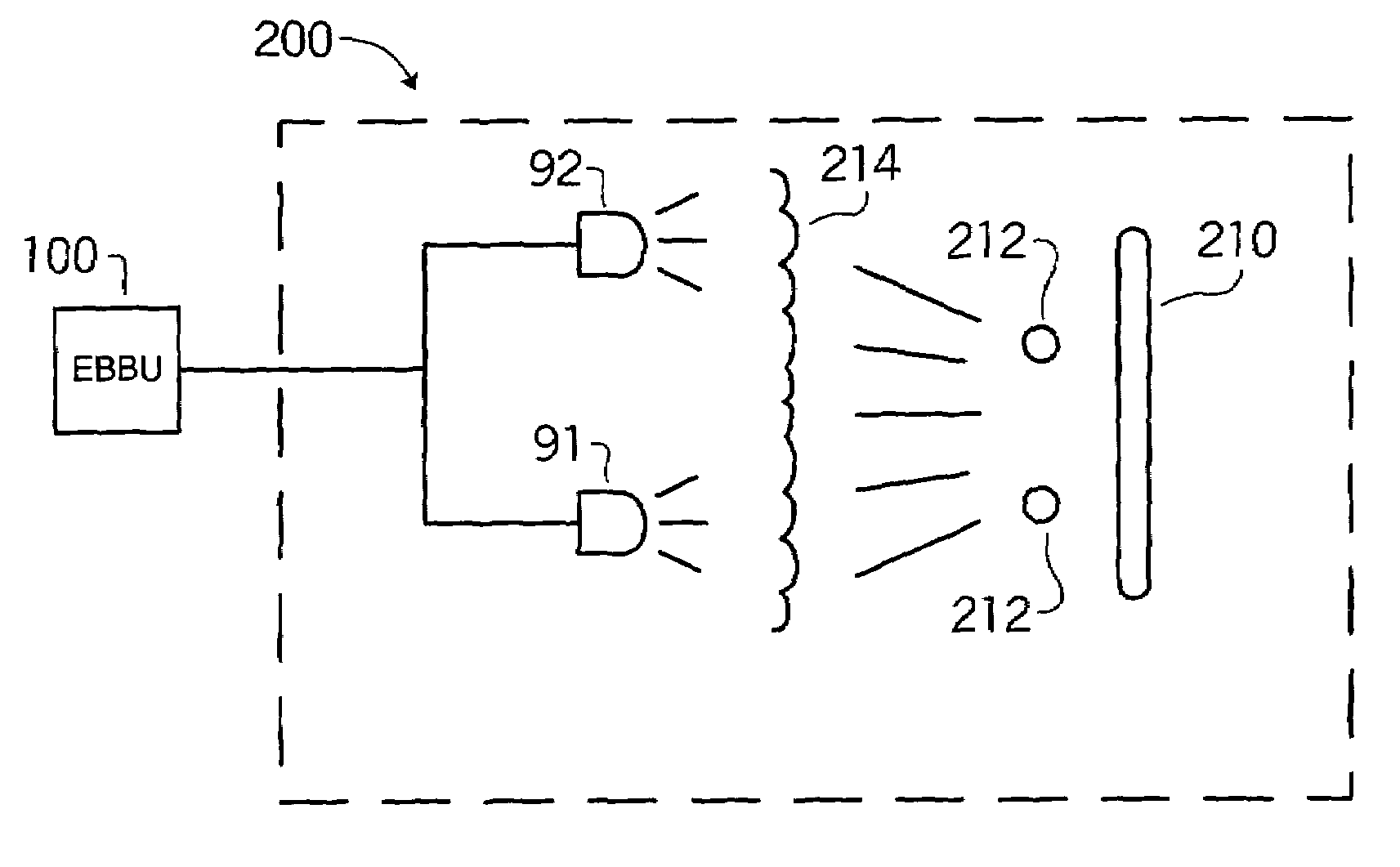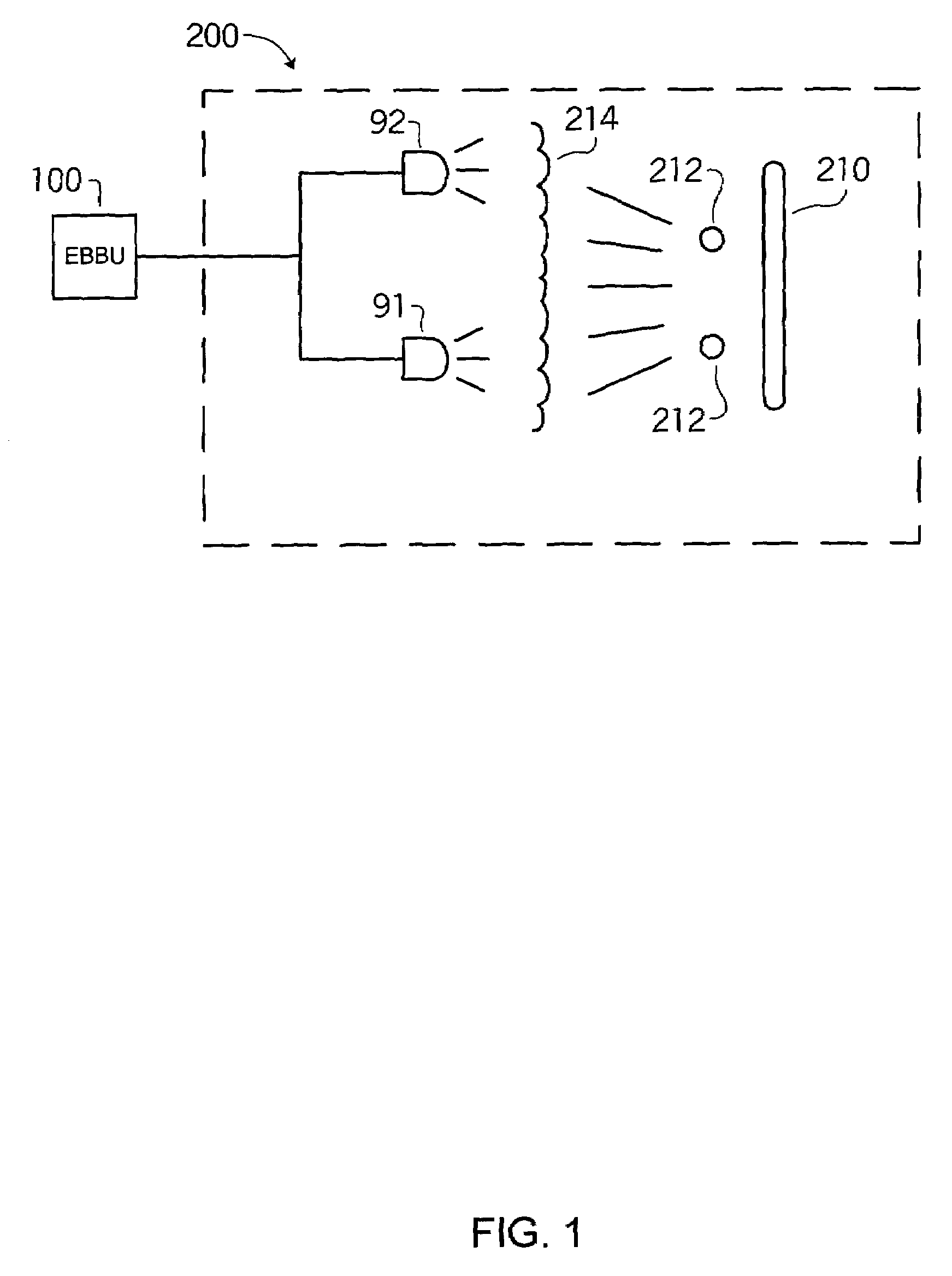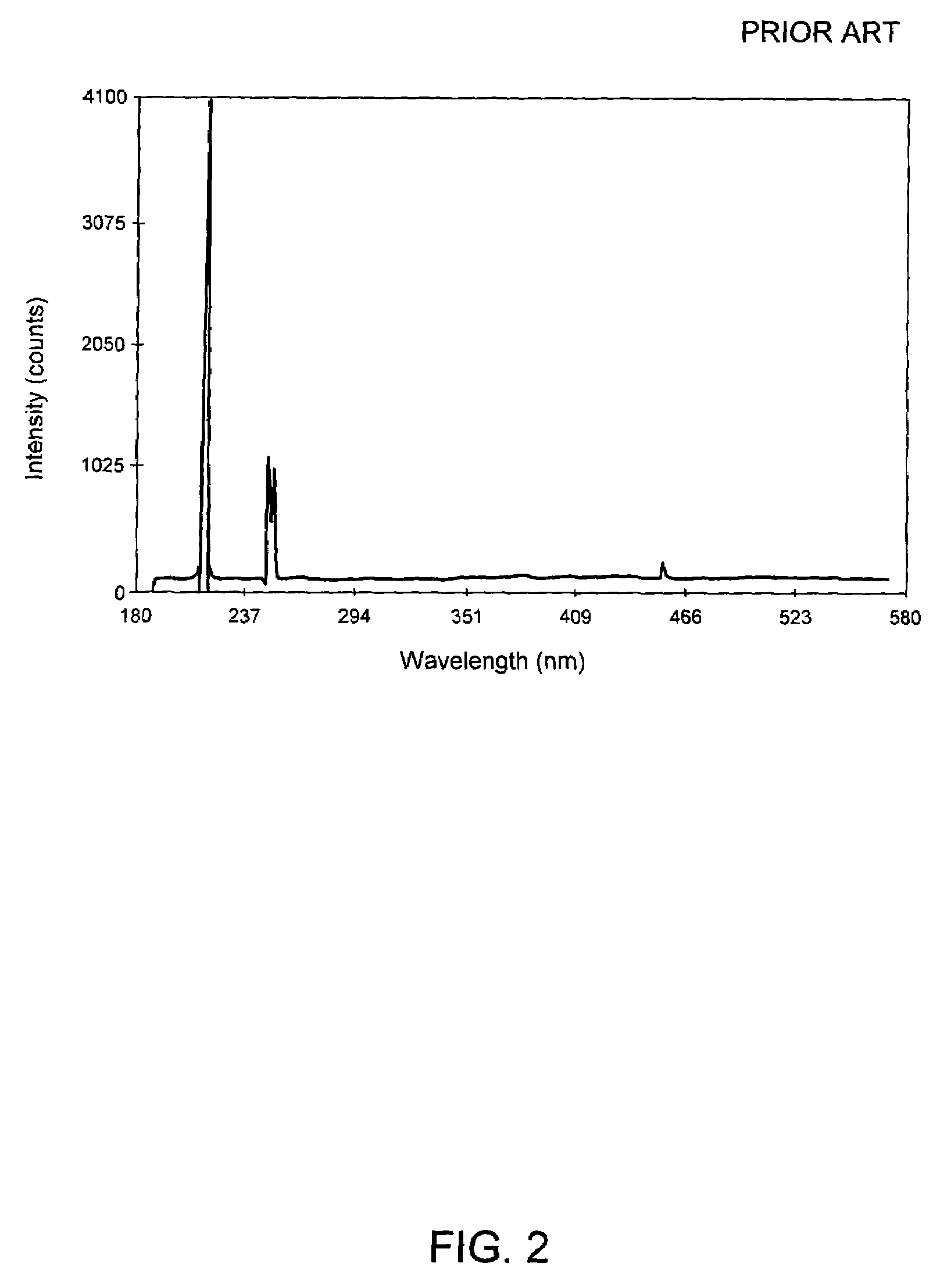Lighting apparatus and system for decontamination
a technology of light-emitting apparatus and decontamination system, which is applied in the direction of material analysis using wave/particle radiation, discharge tube luminescnet screen, instruments, etc., can solve the problem of not being able to effectively kill many types of organisms, and achieve the effect of accelerating damage to one or more organisms, reducing contamination, and reducing damag
- Summary
- Abstract
- Description
- Claims
- Application Information
AI Technical Summary
Benefits of technology
Problems solved by technology
Method used
Image
Examples
example 1
[0058]In one example, an EBBU with a germicidal lamp was tested to determine the time it would take to destroy bacillus spores. Four spore strips were exposed to targeted ultraviolet light at zero seconds, 30 seconds, 60 seconds and 120 seconds, respectively. Each spore strip was positioned approximately nine inches from the bulb. One type of spore strip included bacillus stearothermophilus and was incubated at 55° C. for 14 days prior to exposure to the light. Other spore strips included B. subrilis var. niger and was incubated at 35° C. for 14 days prior to exposure to the light. At one second, the bulb output wattage varied up to approximately 190 watts. At 30 seconds, the bulb output wattage varied between 175 watts and 285 watts. At 60 seconds, the bulb output wattage varied between 182 watts and 289 watts. At 120 seconds, the bulb output wattage varied between 171 watts and 291 watts. Irradiance levels of light emitted at approximately 405 nm and 422 nm that were similar to th...
PUM
| Property | Measurement | Unit |
|---|---|---|
| wavelengths | aaaaa | aaaaa |
| wavelength | aaaaa | aaaaa |
| wavelengths | aaaaa | aaaaa |
Abstract
Description
Claims
Application Information
 Login to View More
Login to View More - R&D
- Intellectual Property
- Life Sciences
- Materials
- Tech Scout
- Unparalleled Data Quality
- Higher Quality Content
- 60% Fewer Hallucinations
Browse by: Latest US Patents, China's latest patents, Technical Efficacy Thesaurus, Application Domain, Technology Topic, Popular Technical Reports.
© 2025 PatSnap. All rights reserved.Legal|Privacy policy|Modern Slavery Act Transparency Statement|Sitemap|About US| Contact US: help@patsnap.com



